Themed collection Bioinspired metal complexes for chemical transformations and catalysis

Successes, challenges, and opportunities for quantum chemistry in understanding metalloenzymes for solar fuels research
Overview of the rich and diverse contributions of quantum chemistry to understanding the structure and function of the biological archetypes for solar fuel research, photosystem II and hydrogenases.
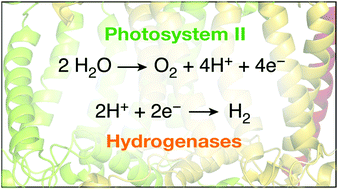
Chem. Commun., 2021,57, 3952-3974
https://doi.org/10.1039/D1CC00705J
Bioinspired metal complexes for energy-related photocatalytic small molecule transformation
This article features the recent progress of bioinspired metal complexes as catalysts with high stability, specific selectivity and satisfactory efficiency to drive multiple-electron and multiple-proton related to small molecule transformation.

Chem. Commun., 2020,56, 15496-15512
https://doi.org/10.1039/D0CC05870J
Catalytic hydrogenation enabled by ligand-based storage of hydrogen
Using inspiration from biological cofactors, the reversible storage of hydrogen on a supporting dihydrazonopyrrole ligand enables catalytic hydrogenation reactivity with nickel.
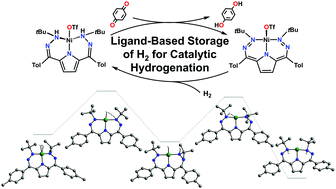
Chem. Commun., 2021,57, 3869-3872
https://doi.org/10.1039/D0CC08236H
Theoretical studies unveil the unusual bonding in oxygenation reactions involving cobalt(II)-iodylarene complexes
DFT calculations reveal that halogen bonds and 3c-4e bonds make a difference in the metal-iodylarene chemistry.
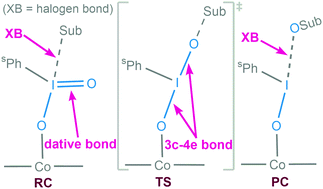
Chem. Commun., 2021,57, 3115-3118
https://doi.org/10.1039/D0CC07894H
A bioinspired oxoiron(IV) motif supported on a N2S2 macrocyclic ligand
A mononuclear oxoiron(IV) complex 1-trans bearing two equatorial sulfur ligations is synthesized and characterized as an active-site model of the elusive sulfur-ligated FeIV![[double bond, length as m-dash]](https://www.rsc.org/images/entities/char_e001.gif) O intermediates in non-heme iron oxygenases.
O intermediates in non-heme iron oxygenases.
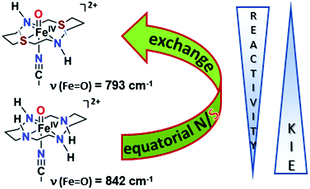
Chem. Commun., 2021,57, 2947-2950
https://doi.org/10.1039/D1CC00250C
Multiple selectivity-determining mechanisms of H2O2 formation in iron porphyrin-catalysed oxygen reduction
Multiple H2O2-forming mechanisms are accessible in Fe(porphyrin)-catalysed oxygen reduction, a key reaction in both fuel cell technologies and oxygen-utilizing enzymes.
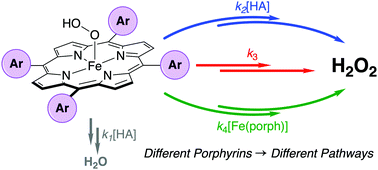
Chem. Commun., 2021,57, 1202-1205
https://doi.org/10.1039/D0CC06701F
Modulating alkene reactivity from oxygenation to halogenation via electrochemical O2 activation by Mn porphyrin
Modulating alkene reactivity from oxygenation to halogenation with an exogenous ligand via O2 electrochemical reductive activation.
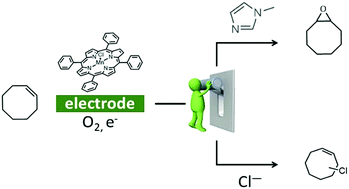
Chem. Commun., 2021,57, 1198-1201
https://doi.org/10.1039/D0CC07531K
Histidine orientation in artificial peroxidase regioisomers as determined by paramagnetic NMR shifts
A semi-empirical approach allows determining the His axial-ligand orientation with respect to the porphyrin plane in synthetic heme-peroxidases, for structure/function analysis.
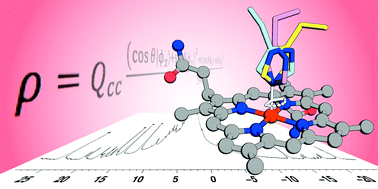
Chem. Commun., 2021,57, 990-993
https://doi.org/10.1039/D0CC06676A
Electron transfer within β-diketiminato nickel bromide and cobaltocene redox couples activating CO2
Even though β-diketiminato nickel(II) bromide and cobaltocene have nearly identical redox potentials the corresponding electron transfer complex can be crystallised from the equilibrium and activates CO2 to form a mononuclear nickel(II) carbonate.
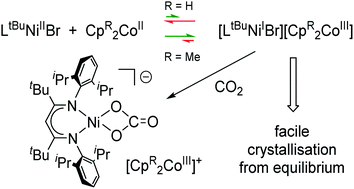
Chem. Commun., 2021,57, 875-878
https://doi.org/10.1039/D0CC06983C
Spectroscopic discernibility of dopants and axial ligands in pyridinic FeN4 environments relevant to single-atom catalysts
A guide for the spectroscopic differentiation of iron complexes with square-pyramidal, conjugated, pyridinic environments is presented.
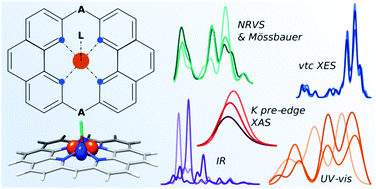
Chem. Commun., 2021,57, 859-862
https://doi.org/10.1039/D0CC06237E
Bridging and axial carbene binding modes in cobalt corrole complexes: effect on carbene transfer
Two different types of carbene intermediates are observed in the reaction of ethyl diazoacetate (EDA) with different Co corrole complexes, and their properties and reactivities are reported.
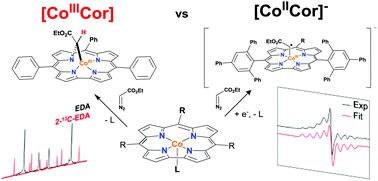
Chem. Commun., 2020,56, 14881-14884
https://doi.org/10.1039/D0CC07073D
Ambiphilicity of a mononuclear cobalt(III) superoxo complex
Addition of HOTf to a mixture of CoIII(BDPP)(O2˙) (1) and Cp*2Fe produced H2O2 in high yield implying formation of CoIII(BDPP)(OOH) (3), and reaction of Sc(OTf)3 with the same mixture gave a peroxo-bridged CoIII/ScIII5.
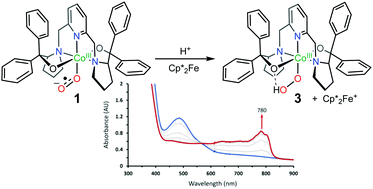
Chem. Commun., 2020,56, 14821-14824
https://doi.org/10.1039/D0CC05337F
Catalytic O2 activation with synthetic models of α-ketoglutarate dependent oxygenases
An iron complex with a tridentate 1,4,7-triazacyclononane ligand mimics structural and functional features of α-ketoglutarate (α-KG) dependent enzymes, and engages in catalytic O2 activation coupled to α-KG decarboxylation and sulfide oxygenation.
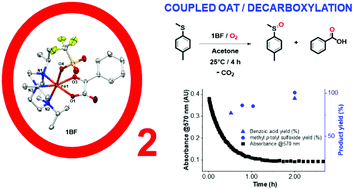
Chem. Commun., 2020,56, 14369-14372
https://doi.org/10.1039/D0CC05942K
Revisiting amorphous molybdenum sulfide's activity for the electro-driven reduction of dinitrogen and N-containing substrates
Amorphous molybdenum sulfide exhibits partial nitrogenase-like activity allowing for the electro driven reduction of azides under aqueous conditions.
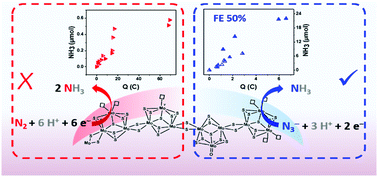
Chem. Commun., 2020,56, 13975-13978
https://doi.org/10.1039/D0CC05078D
Mobility of Lewis acids within the secondary coordination sphere: toward a model for cooperative substrate binding
Distance dependence of appended Lewis acids in N2H4 binding and deprotonation was evaluated within a series of zinc complexes.
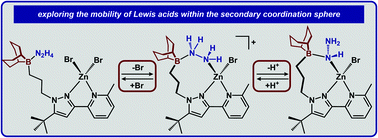
Chem. Commun., 2020,56, 13105-13108
https://doi.org/10.1039/D0CC05121G
Ligand regulation for manganese-catalyzed enantioselective epoxidation of olefins without acid
A manganese-catalyzed asymmetric epoxidation of olefins is developed under acid-free conditions. MnIV![[double bond, length as m-dash]](https://www.rsc.org/images/entities/char_e001.gif) O species serves as an active species.
O species serves as an active species.

Chem. Commun., 2020,56, 13101-13104
https://doi.org/10.1039/D0CC04440G
Kinetic and mechanistic analysis of a synthetic reversible CO2/HCO2− electrocatalyst
A kinetic and mechanistic analysis of [Pt(depe)2](PF6)2, an electrocatalyst for the reversible conversion between CO2 and HCO2− with high selectivity at low overpotentials.
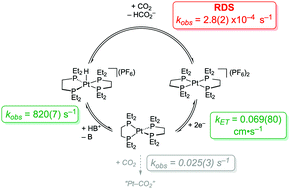
Chem. Commun., 2020,56, 12965-12968
https://doi.org/10.1039/D0CC05556E
Copper arylnitrene intermediates: formation, structure and reactivity
The mechanism of oxidation of arylamines by copper enzymes is not clarified yet. A possible pathway involves copper(II)oxyl intermediates transforming arylamines to copper aryl nitrenes. We investigate details of this pathway in a gas phase reaction.
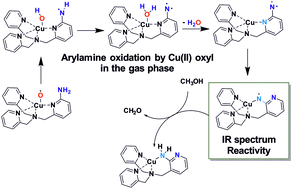
Chem. Commun., 2020,56, 12721-12724
https://doi.org/10.1039/D0CC05198E
Spin-resolved charge displacement analysis as an intuitive tool for the evaluation of cPCET and HAT scenarios
The spin-resolved version of the charge displacement function is introduced as an intuitive tool for differentiating between hydrogen-atom transfer and concerted proton-coupled electron transfer.
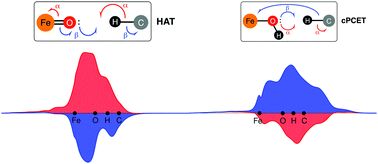
Chem. Commun., 2020,56, 12146-12149
https://doi.org/10.1039/D0CC04995F
Synthesis of a B12–BODIPY dyad for B12-inspired photochemical transformations of a trichloromethylated organic compound
A B12 complex–BODIPY dyad was synthesized by peripheral modification of cobalamin derivatives.
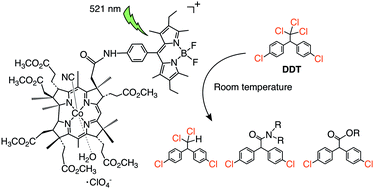
Chem. Commun., 2020,56, 11945-11948
https://doi.org/10.1039/D0CC04274A
A NiRhS fuel cell catalyst – lessons from hydrogenase
Novel dry-distilled catalysts based on Rh, Ni and S were developed via a Ni(μ-S)2Rh organometallic [NiFe]hydrogenase mimic.
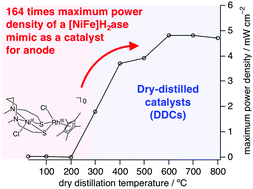
Chem. Commun., 2020,56, 11787-11790
https://doi.org/10.1039/D0CC04789A
A heterogeneous bio-inspired peroxide shunt for catalytic oxidation of organic molecules
Iron porphyrins with three different axial ligands installed atop self-assembled monolayer modified gold electrodes can oxidize C–H bonds and epoxidize alkenes efficiently using H2O2via the formation of a high-valent intermediate.
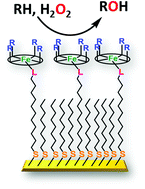
Chem. Commun., 2020,56, 11593-11596
https://doi.org/10.1039/D0CC03468A
Proton-promoted disproportionation of iron(V)-imido TAML to iron(V)-imido TAML cation radical and iron(IV) TAML
An iron(V)-imido TAML complex is disproportionated to give an iron(V)-imido TAML cation radical and an iron(IV) TAML upon addition of acids.

Chem. Commun., 2020,56, 11207-11210
https://doi.org/10.1039/D0CC05145D
Bimetallic iron–tin catalyst for N2 to NH3 and a silyldiazenido model intermediate
A new tin-supported iron complex catalyzes N2 fixation. The role of this heavy main group element in the catalysis is evaluated.
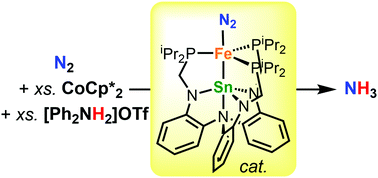
Chem. Commun., 2020,56, 11030-11033
https://doi.org/10.1039/D0CC04563B
Selective catalytic 2e−-oxidation of organic substrates by an FeII complex having an N-heterocyclic carbene ligand in water
An FeII complex, 1, having a pentadentate ligand with an NHC moiety catalyzes substrate oxidation to afford 2e−-oxidized products with high selectivity by suppression of overoxidation in water.
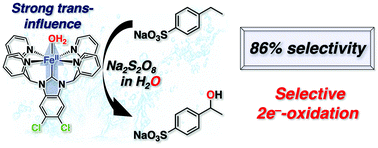
Chem. Commun., 2020,56, 9783-9786
https://doi.org/10.1039/D0CC03289A
Controlled O2 reduction at a mixed-valent (II,I) Cu2S core
Oxygen reduction reactions catalyzed by a mixed-valent copper complex reveal a tuneable H2O2/H2O selectivity at room temperature together with high stability over several cycles.

Chem. Commun., 2020,56, 9636-9639
https://doi.org/10.1039/D0CC03987J
Nucleophilic reactivity of a mononuclear cobalt(III)–bis(tert-butylperoxo) complex
A mononuclear cobalt(III)–bis(tert-butylperoxo) adduct (CoIII–(OOtBu)2) bearing a tetraazamacrocyclic ligand was synthesized and characterized using various physicochemical methods, such as X-ray, UV-vis, ESI-MS, EPR, and NMR analyses.

Chem. Commun., 2020,56, 9449-9452
https://doi.org/10.1039/D0CC03385E
Metal–ligand cooperativity across two sites of a square planar iron(II) complex ligated by a tetradentate PNNP ligand
A square planar (PNNP)FeII complex is shown to readily activate two B–H bonds across the Fe–amide linkages in an overall four-electron process facilitated by metal–ligand cooperativity.
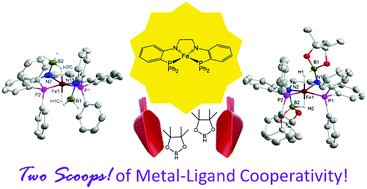
Chem. Commun., 2020,56, 8611-8614
https://doi.org/10.1039/D0CC02152K
A dinuclear Mo2H8 complex supported by bulky C5H2tBu3 ligands
A simple dinuclear hydride complex consisting of only Mo, hydrides, and cyclopentadienyl ligands was synthesized and tested for benzene activation.

Chem. Commun., 2020,56, 8035-8038
https://doi.org/10.1039/D0CC03274C
Preparation and reactivity of molybdenum complexes bearing pyrrole-based PNP-type pincer ligand
Molybdenum complexes bearing an anionic pyrrole-based PNP-type pincer ligand have been prepared and have been found to work as catalysts for the conversion of N2 into NH3 under ambient conditions.

Chem. Commun., 2020,56, 6933-6936
https://doi.org/10.1039/D0CC02852E